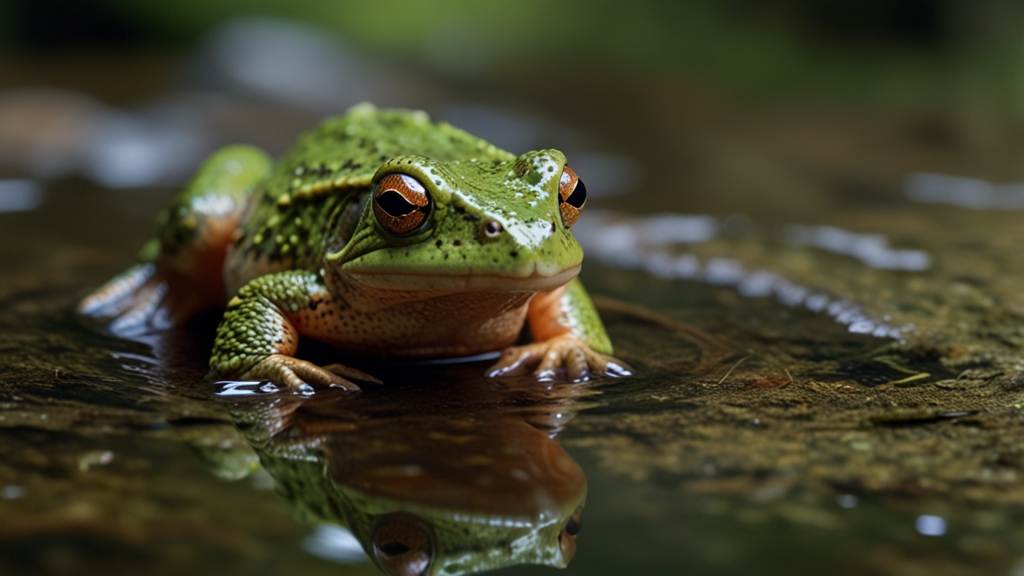The Amphibian Crisis: How You Can Make a Difference
Amphibians, often considered nature's ecological indicators, are facing an alarming crisis. With their sensitivity to environmental changes, the decline in amphibian populations worldwide signifies a broader ecological imbalance. This article aims to shed light on the causes of the amphibian crisis and how individuals can take meaningful steps to mitigate this growing problem.
Understanding the Amphibian Crisis
Over the past few decades, scientists have recorded a significant decline in amphibian populations. Approximately 41% of amphibian species are now threatened, according to the International Union for Conservation of Nature (IUCN). The reasons behind this decline are multifaceted, including habitat destruction, climate change, pollution, disease, and invasive species.
One of the most concerning factors is the spread of a deadly fungal disease known as chytridiomycosis. This disease has driven many species to the brink of extinction, decimating populations across various continents. Climate change exacerbates this issue, altering habitats and temperature regimes, making them unsuitable for amphibians.
Why Amphibians Matter
Amphibians play a critical role in ecosystems. They act as both predator and prey, maintaining the balance of insect populations and providing food for larger animals. Their permeable skin makes them excellent indicators of environmental health, alerting us to ecological problems before they escalate.
“Amphibians are often described as 'the canaries in the coal mine' for ecosystems. Their decline is a clear signal that the health of our environment is at risk,” says Dr. Karen Lips, a noted herpetologist.
Moreover, amphibians contribute to human health. Compounds found in amphibian skin are being researched for their potential medicinal properties, including painkillers and antibiotics. Thus, their extinction could mean the loss of invaluable medical advancements.
Steps You Can Take to Help
Despite the grim outlook, there are several ways individuals can contribute to amphibian conservation. Here’s how you can make a difference:
1. Support Conservation Organizations
Numerous organizations are dedicated to amphibian conservation. Supporting these groups through donations or volunteer work can significantly impact their efforts. Consider contributing to organizations like Amphibian Ark, Save the Frogs!, or the Amphibian Survival Alliance.
2. Create Habitats
Creating or preserving habitats can provide safe havens for local amphibian species. Simple measures like building a backyard pond, conserving forests, and preventing pollution can create a more hospitable environment for amphibians.
3. Practice Responsible Tourism
When visiting natural habitats, ensure you do so responsibly. Avoid disturbing local wildlife, and never remove amphibians from their natural environment. If you encounter amphibians in the wild, look but do not touch, as their skin is highly sensitive.
4. Reduce Chemical Usage
Minimize the use of pesticides and fertilizers in your garden. These chemicals can runoff into waterways, poisoning amphibian habitats. Opt for organic gardening methods and educate others about the impact of chemical pollutants.
5. Participate in Citizen Science Projects
Platforms like iNaturalist and FrogWatch USA allow you to contribute to real scientific research by documenting amphibian sightings. These efforts help scientists track populations and identify critical habitats in need of protection.
“Engaging in citizen science empowers individuals to take active roles in conservation and allows scientists to gather data over large areas, which would otherwise be impossible,” notes Dr. Michele Koenig, a conservation biologist.
6. Educate and Advocate
Raise awareness about the amphibian crisis within your community. Use social media, local events, or educational programs to inform others about the importance of amphibians and what they can do to help. Advocacy can also include contacting local representatives to support policies aimed at protecting these vital species.
Conclusion
The amphibian crisis is an urgent environmental issue that requires collective action. By understanding the causes and taking proactive steps, we can contribute to the preservation of these fascinating and essential creatures. Whether through supporting conservation efforts, creating habitats, reducing chemical use, participating in citizen science, or educating others, every action counts. Together, we can make a difference and help ensure a future where amphibians—and the ecosystems they support—can thrive.








